Lead (Pb) occurs naturally in the environment as a trace element. Lead major natural sources include volcanoes and weathering of rocks. Human activities, including mining, coal combustion, addition to gasoline and waste incineration, have greatly increased the distribution and abundance of lead in the environment. Increased usage and then phasing-out of leaded-petrol since the mid-70s yielded a decrease of this contamination.
Lead can enter the ocean by atmospheric deposition and fluvial freshwaters are common to other trace metals. Therefore, lead provides a proxy of trace metal inputs to the ocean. Isotopic ratios of Pb can be applied to determining the source material (ie. gasoline, coal) or the source location (ie. Asia, North America) of Pb inputs.
By measuring lead concentrations and isotopes GEOTRACES scientists reveal for the first time that natural lead can be detected again in the surface water of the North Atlantic. Indeed, significant proportions of up to 30–50% of natural Pb, derived from mineral dust, are observed in Atlantic surface waters off the Sahara. This clearly reflects the success of the global effort to reduce anthropogenic Pb emissions. Indeed, the increased usage and then phasing-out of leaded petrol since the mid-70s yielded a decrease in this pollution.
Atlas
(The images below may not show if you are using Safari. Please change your browser if necessary).
Atlantic Ocean:
Indian Ocean:
Pacific Ocean:
Arctic Ocean:
Data
Data is available to download after registration here: https://geotraces.webodv.awi.de/login
Discoveries include:
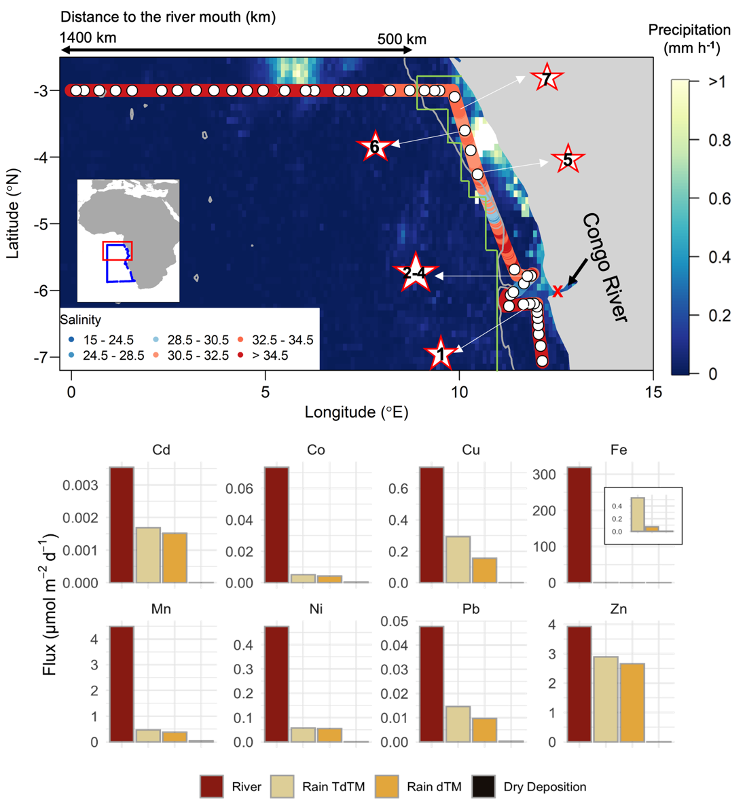
Trace metal fluxes of cadmium, copper, lead and zinc from the Congo River into the South Atlantic Ocean are supplemented by atmospheric inputs
Liu and colleagues show that rainfall augments some fluxes of trace metals from the Congo River.
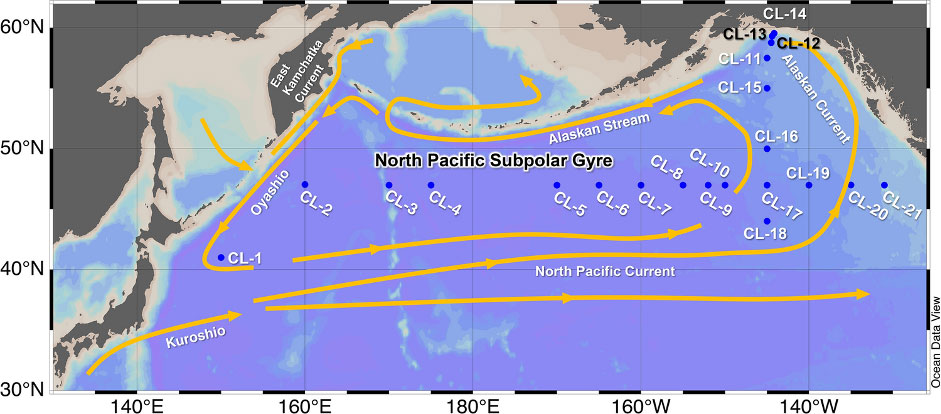
Aluminium, manganese, iron, cobalt, and lead display contrasting fate along north–south and east–west sections in the North Pacific Ocean
Chan et co-authors provide a comprehensive view of trace metal distribution in the subarctic Pacific Ocean.

Lead isotopes allow tracing the processes injecting of anthropogenic lead in deep waters
This work follows the penetration of anthropogenic lead (traced using its isotopic signatures) into the pristine deep Pacific Ocean.
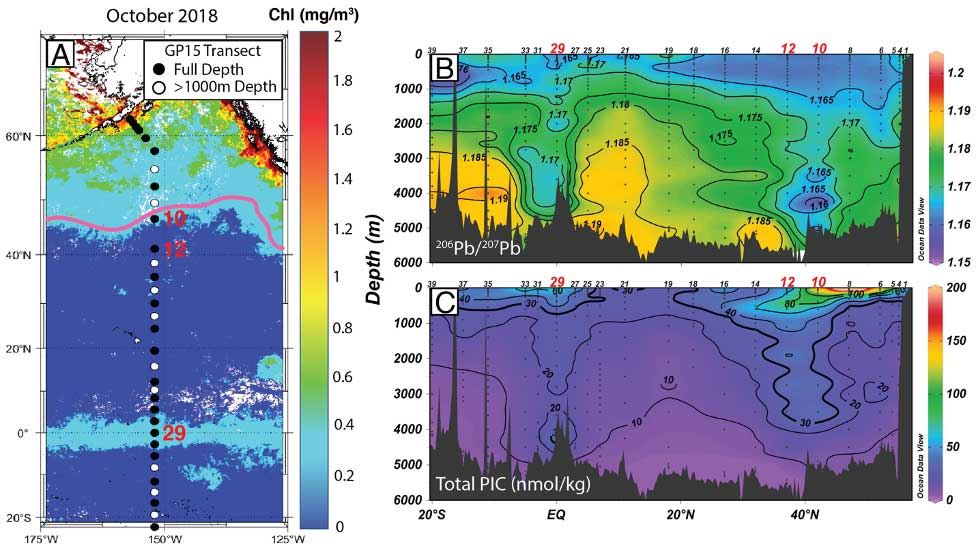
Pulling back the veil on reversible scavenging of lead
This work further contains the role that reversible scavenging may play in the cycling of lead in the ocean, an ever-evolving global experiment where lead contamination can be tracked in real-time.
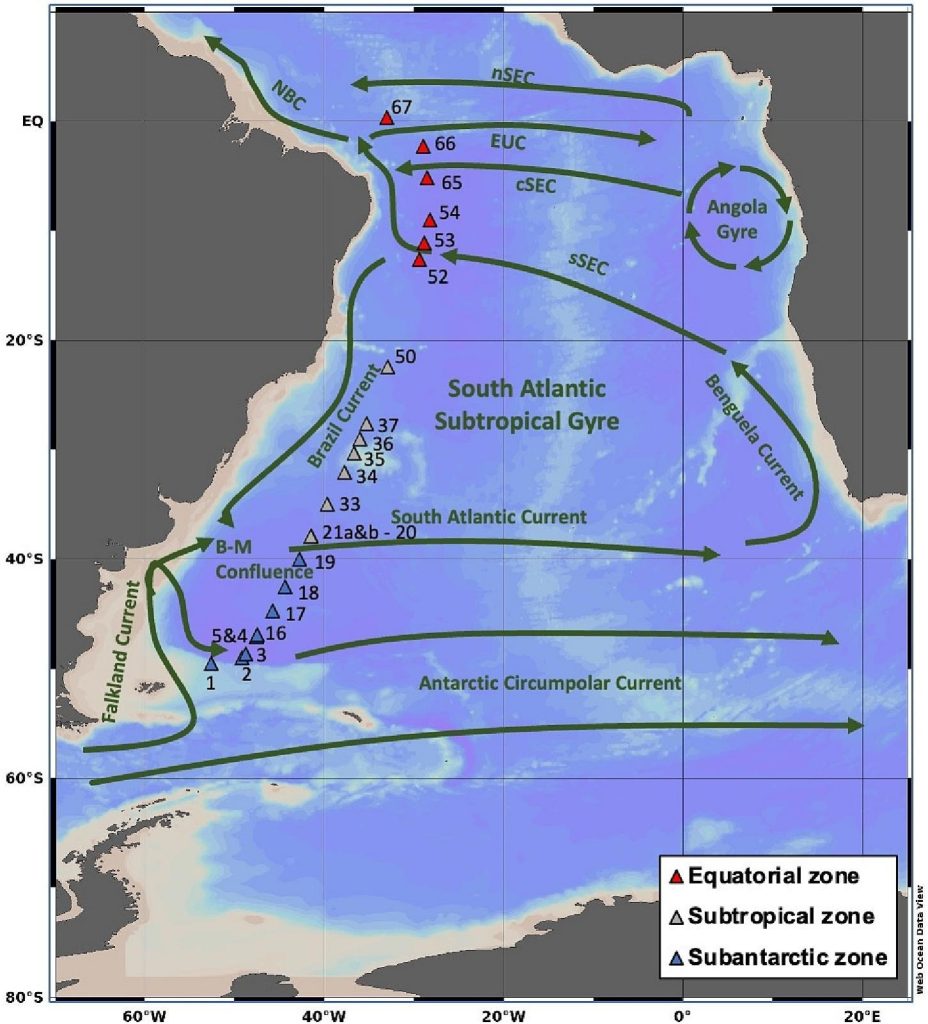
Decline of the anthropogenic lead imprint to the ocean confirmed by data from the South West Atlantic Ocean
This study reveals that the mean lead concentrations in the surface waters of the western South Atlantic Ocean decreased by 34 % between the 1990s and 2011.
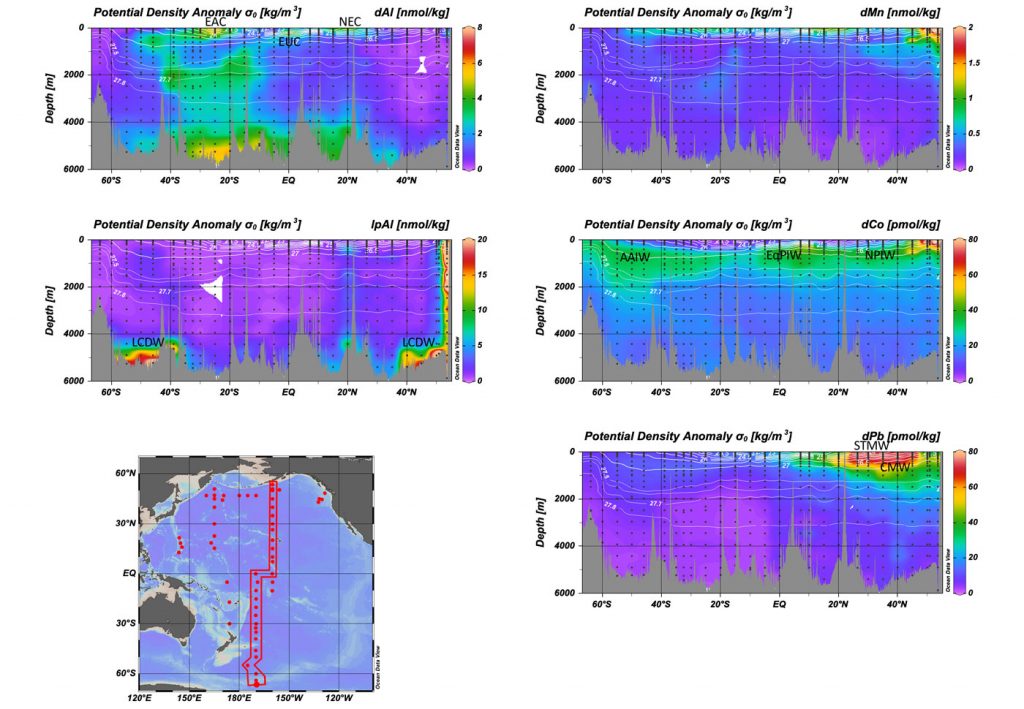
Different fates of four poorly soluble trace elements in the Pacific Ocean
Zheng and co-authors present the full-depth distributions of aluminum, lead, manganese and copper in the western South Pacific.
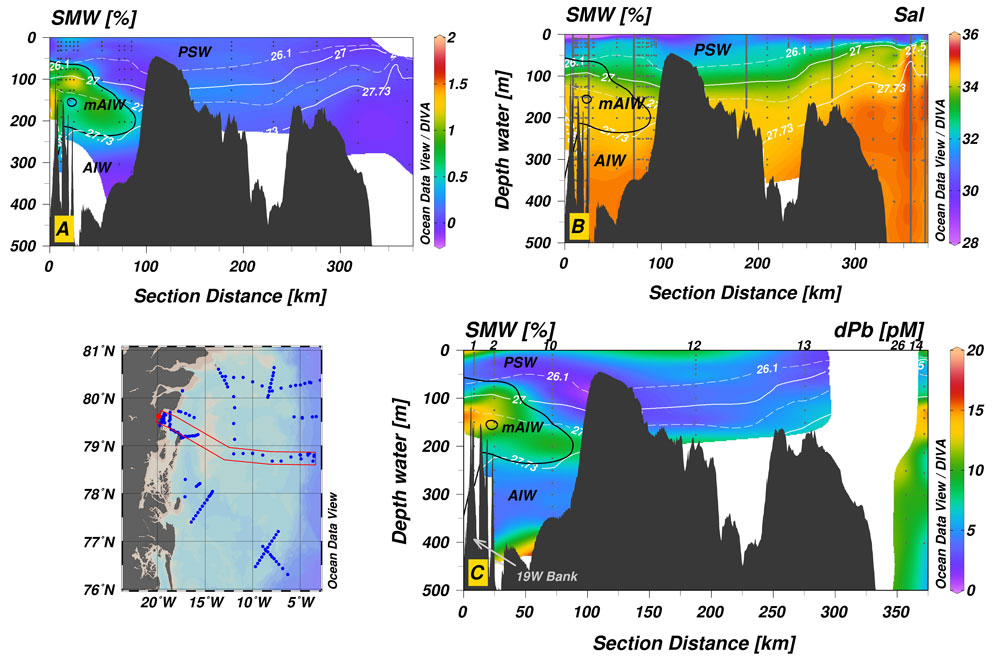
Greenland’s floating ice tongues, sources of dissolved lead to the Arctic
Using helium and neon as tracers for subglacial meltwater, Krisch and colleagues found that subglacial discharge is a source of dissolved lead.
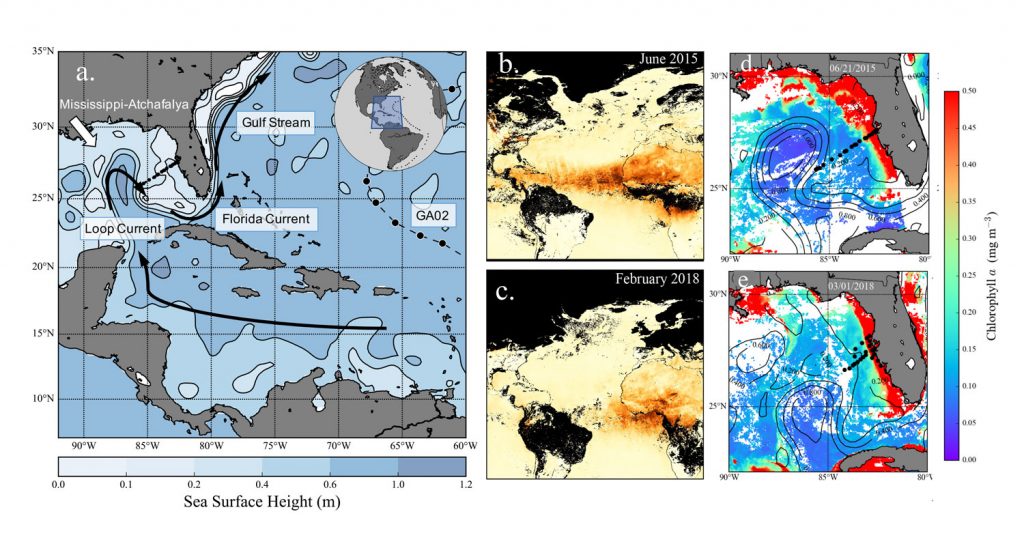
Spatial and temporal variability of bioactive trace metals, speciation and organic metal-binding ligands in the eastern Gulf of Mexico
Mellett and Buck present the concentrations of bioactive trace metals (Fe, Cu, Mn, Zn, Co, Ni, Cd, and Pb), Fe-and Cu-binding organic ligands, and electroactive Fe-binding humic substances in the eastern Gulf of Mexico.
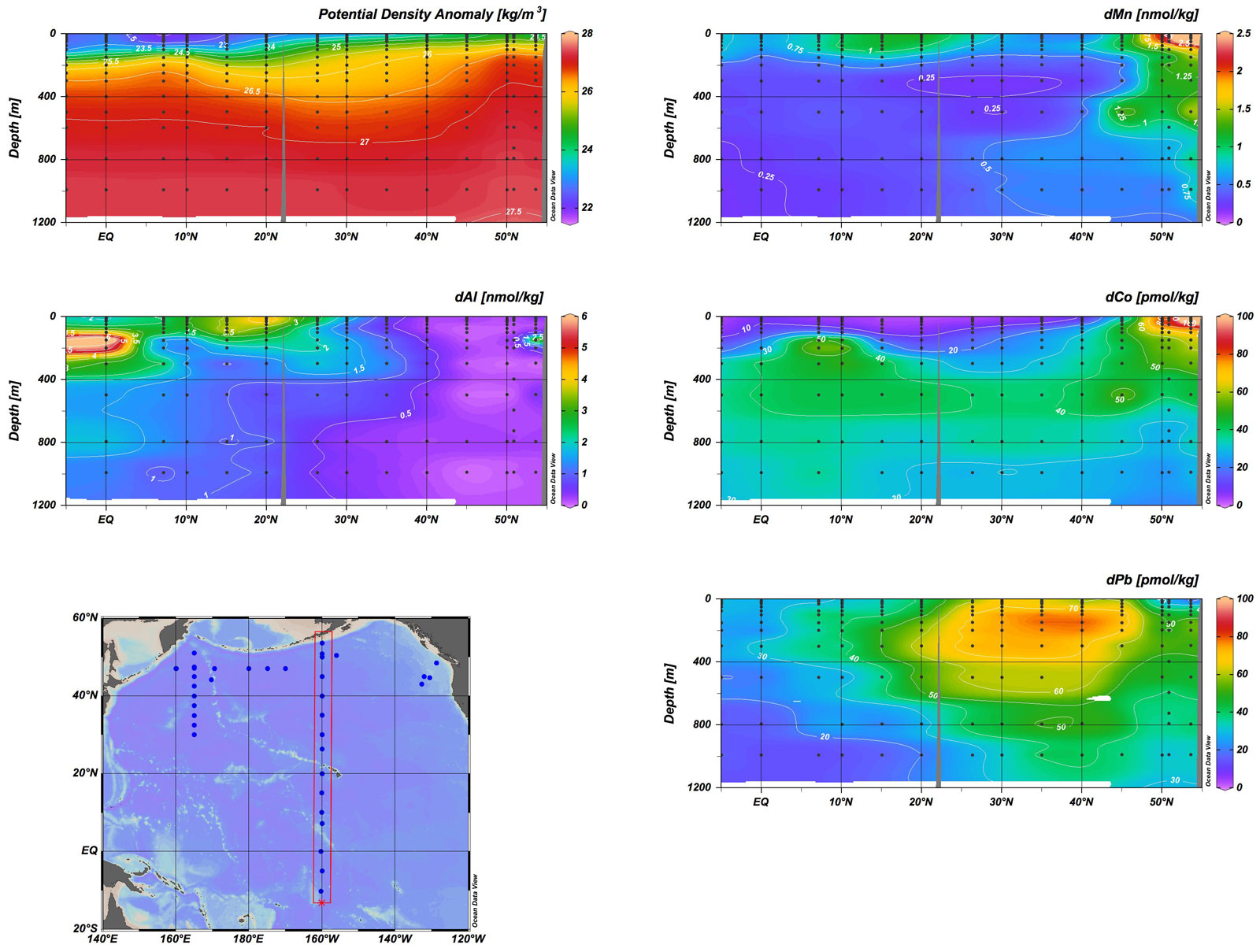
About the decoupled fates of aluminium, manganese, cobalt and lead in the North Pacific Ocean
Did you know that each of these tracers could follow its own marine story, quite decoupled from the others?
